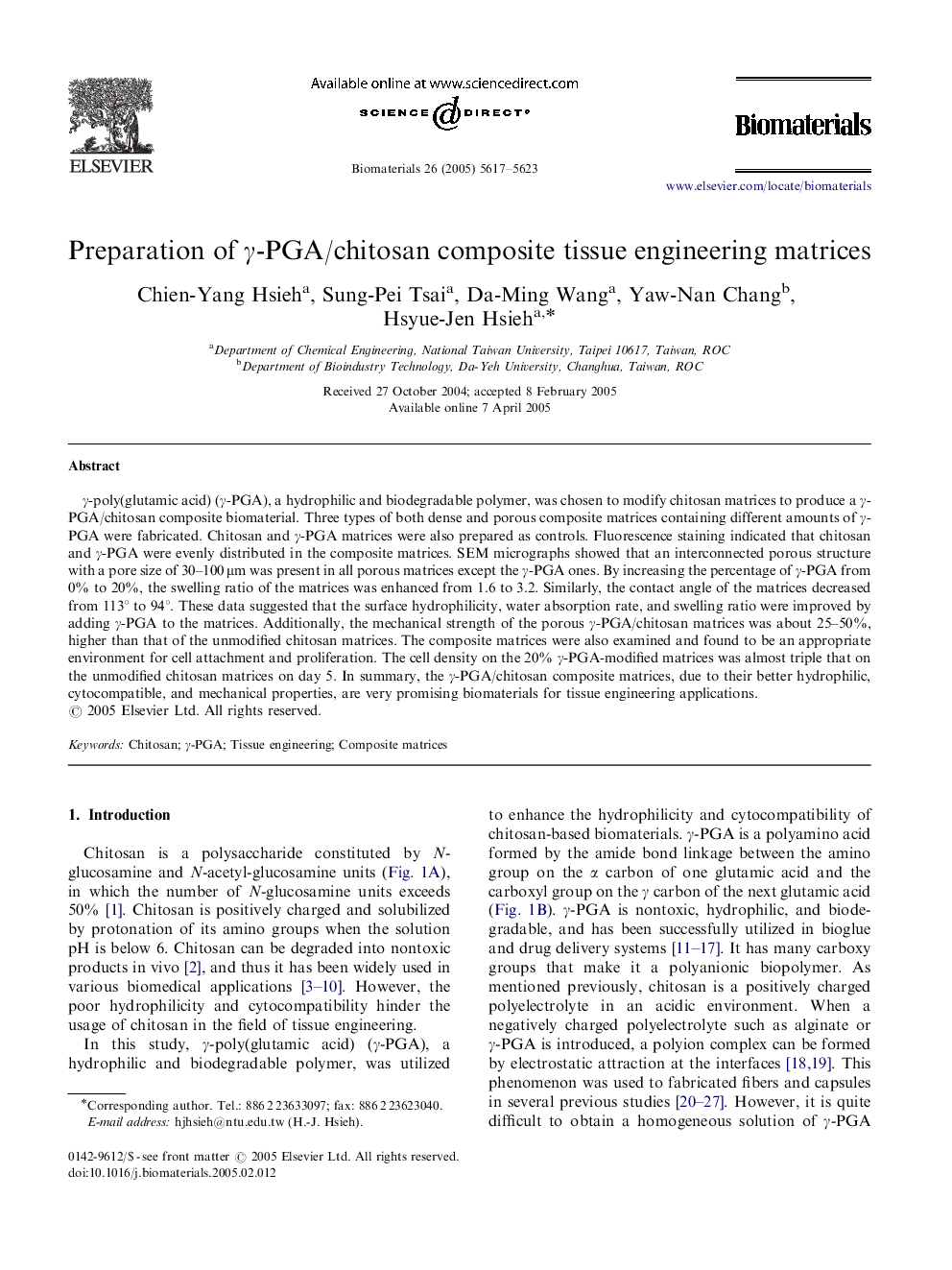| Article ID | Journal | Published Year | Pages | File Type |
|---|---|---|---|---|
| 11067 | Biomaterials | 2005 | 7 Pages |
γγ-poly(glutamic acid) (γγ-PGA), a hydrophilic and biodegradable polymer, was chosen to modify chitosan matrices to produce a γγ-PGA/chitosan composite biomaterial. Three types of both dense and porous composite matrices containing different amounts of γγ-PGA were fabricated. Chitosan and γγ-PGA matrices were also prepared as controls. Fluorescence staining indicated that chitosan and γγ-PGA were evenly distributed in the composite matrices. SEM micrographs showed that an interconnected porous structure with a pore size of 30–100 μm was present in all porous matrices except the γγ-PGA ones. By increasing the percentage of γγ-PGA from 0% to 20%, the swelling ratio of the matrices was enhanced from 1.6 to 3.2. Similarly, the contact angle of the matrices decreased from 113° to 94°. These data suggested that the surface hydrophilicity, water absorption rate, and swelling ratio were improved by adding γγ-PGA to the matrices. Additionally, the mechanical strength of the porous γγ-PGA/chitosan matrices was about 25–50%, higher than that of the unmodified chitosan matrices. The composite matrices were also examined and found to be an appropriate environment for cell attachment and proliferation. The cell density on the 20% γγ-PGA-modified matrices was almost triple that on the unmodified chitosan matrices on day 5. In summary, the γγ-PGA/chitosan composite matrices, due to their better hydrophilic, cytocompatible, and mechanical properties, are very promising biomaterials for tissue engineering applications.
